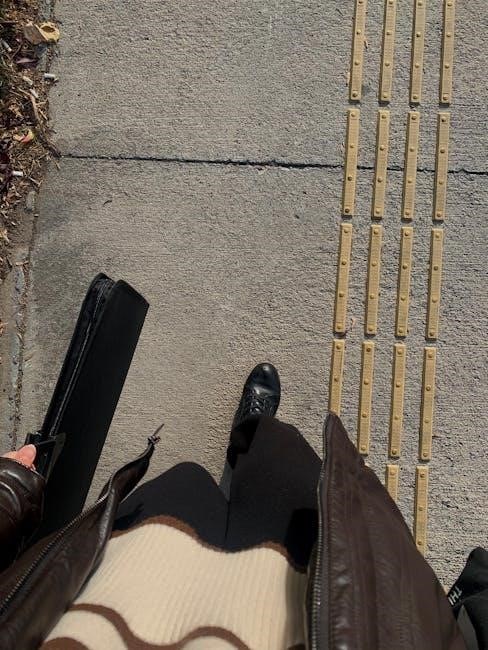Jazz Shoe Size Guide: Finding the Perfect Fit
Finding the perfect jazz shoe fit presents a unique challenge. Sizing varies significantly across brands like Bloch‚ Capezio‚ and Energetiks. Understanding these nuances is crucial for comfort and performance. This guide offers insights into navigating the complexities of jazz shoe sizing.
The quest for the ideal jazz shoe size often feels like navigating a labyrinth. Unlike street shoes‚ where sizing is relatively standardized‚ jazz shoe sizing exhibits significant variability across different brands and styles. This inconsistency presents a challenge for dancers of all levels‚ from beginners to seasoned professionals.
The discrepancies in sizing stem from several factors‚ including the use of different measurement systems (US‚ UK‚ EU) and variations in shoe construction and materials. A size 7 in one brand may not correspond to a size 7 in another‚ leading to confusion and potential misfits. Furthermore‚ the type of jazz shoe‚ whether full-sole or split-sole‚ can also influence the required size.
Adding to the complexity‚ individual foot shapes and widths play a crucial role in determining the optimal fit. A dancer with narrow feet may require a different size or style than one with wide feet. Accounting for these individual variations is essential for ensuring comfort and preventing injuries.
Therefore‚ understanding the intricacies of jazz shoe sizing is paramount for dancers seeking to enhance their performance and protect their feet. This guide aims to demystify the sizing process and provide practical tips for finding the perfect fit.
Understanding Street Shoe vs. Jazz Shoe Sizes
One of the initial hurdles in jazz shoe sizing is recognizing the difference between street shoe sizes and jazz shoe sizes. While it might seem logical to assume a direct correlation‚ this is often not the case. Jazz shoes are designed with specific features and materials that necessitate a different approach to sizing.
Street shoes typically prioritize comfort for everyday wear‚ with a focus on cushioning and support. Jazz shoes‚ on the other hand‚ are engineered for flexibility‚ articulation‚ and a snug fit that allows for precise movements. This difference in design philosophy translates into variations in sizing.
Generally‚ jazz shoes tend to run smaller than street shoes. This means that dancers often need to size up when selecting jazz shoes. The exact amount of sizing up can vary depending on the brand‚ style‚ and individual foot characteristics.
For women‚ a general guideline is to size up 0.5 to 1 size from their street shoe size. Men may need to go up 1 to 1.5 sizes. However‚ these are just starting points‚ and it’s crucial to consult the specific brand’s size chart for more accurate recommendations.
Understanding this fundamental difference between street shoe and jazz shoe sizes is the first step towards finding the perfect fit. It sets the stage for a more informed and accurate sizing process.
Gender-Specific Sizing Recommendations
When navigating jazz shoe sizing‚ it’s crucial to consider gender-specific recommendations‚ as foot shapes and sizing conventions often differ between men and women. While individual foot variations exist‚ general guidelines can provide a helpful starting point for finding the right fit.
For women‚ it’s generally advised to start by sizing up 0.5 to 1 size from their regular street shoe size. This accounts for the snug fit required for jazz shoes and the potential for variations between brands. However‚ some women may find that their street shoe size works best‚ especially if they have narrower feet or prefer a more relaxed fit.
Men‚ on the other hand‚ typically need to size up more significantly. A common recommendation is to go up 1 to 1.5 sizes from their street shoe size. This is due to the generally larger foot size and broader foot shape of men compared to women.
It’s important to note that these are just general recommendations‚ and individual foot characteristics can significantly impact the ideal size. Factors such as foot width‚ arch height‚ and toe length can all influence the best fit. Therefore‚ consulting the specific brand’s size chart and reading customer reviews are essential steps in the sizing process.

Brand-Specific Sizing Variations (Bloch‚ Capezio‚ Energetiks)
Navigating jazz shoe sizing requires understanding that each brand employs unique sizing systems. Bloch‚ Capezio‚ and Energetiks‚ popular brands‚ each have distinct fit characteristics‚ necessitating careful attention to their sizing guides. Ignoring these variations can lead to discomfort and hinder performance.
Bloch jazz shoes are known for their snug fit. Often‚ dancers need to size up‚ especially those with wider feet. Consulting Bloch’s specific size chart is essential‚ as their sizing can differ significantly from standard street shoe sizes. A too-tight fit can restrict movement and cause discomfort‚ so erring on the side of a slightly larger size is often recommended.
Capezio sizing tends to align more closely with standard street shoe sizes. However‚ variations exist between different Capezio models. Always consult the size chart for the specific shoe you’re interested in. Consider reading customer reviews for insights into the accuracy of Capezio’s sizing for that particular style.
Energetiks‚ an Australian brand‚ often has its own unique size conversions. Referencing Energetiks’ size chart is crucial to ensure an accurate fit. Due to potential differences in sizing‚ it’s best to measure your foot and compare it to Energetiks’ measurements rather than relying on your usual shoe size.
Accounting for Foot Shape and Width
Jazz shoe fitting extends beyond simple length measurements; foot shape and width play crucial roles in achieving optimal comfort and performance. Ignoring these factors can lead to discomfort‚ blisters‚ and even injuries. Understanding your foot’s unique characteristics is paramount when selecting jazz shoes.
Feet come in various shapes – narrow‚ medium‚ wide‚ and extra-wide – each requiring a tailored fit. A narrow foot might fit comfortably in a standard size‚ while a wider foot might necessitate a wider width or even a half-size larger shoe to accommodate the foot’s breadth. Some brands offer specific width options to cater to different foot shapes.
Consider your foot’s arch height as well. High-arched feet might require shoes with more arch support‚ while flat feet might benefit from shoes with a flatter insole. Pay close attention to the manufacturer’s size charts and descriptions‚ which often include width information. If possible‚ try shoes on in a store to determine the best fit for your foot’s unique dimensions.
Remember‚ a proper fit ensures comfort and prevents potential issues during dance practice and performances. Taking the time to assess your foot’s shape and width will result in a more enjoyable dance experience.
The Impact of Shoe Type: Full Sole vs. Split Sole
The type of jazz shoe‚ particularly the sole construction‚ significantly influences fit and feel. Full-sole and split-sole designs cater to different needs and preferences‚ impacting both comfort and performance. Understanding the characteristics of each type is crucial when selecting the right jazz shoe.
Full-sole shoes feature complete rubber coverage‚ providing maximum support and durability. They are ideal for beginners building foot strength and developing proper technique. The continuous sole offers stability and helps maintain foot alignment. However‚ the rigidity of a full sole can restrict flexibility and articulation‚ limiting the dancer’s range of motion.
Split-sole shoes‚ in contrast‚ have rubber only under the ball and heel of the foot. This design allows for increased flexibility and articulation‚ enabling dancers to point their toes more easily and achieve greater freedom of movement. Split soles are preferred by experienced dancers who require enhanced footwork and a more streamlined feel.
The choice between full-sole and split-sole shoes depends on the dancer’s skill level‚ dance style‚ and personal preference. Consider the trade-offs between support and flexibility when making your decision. A proper fit‚ combined with the appropriate sole type‚ will optimize your dance experience.
Material Matters: Leather vs. Canvas Sizing Differences
The material of a jazz shoe‚ primarily leather or canvas‚ significantly affects its fit and feel‚ requiring adjustments in sizing considerations. Leather and canvas behave differently over time‚ impacting the overall comfort and performance of the shoe. Understanding these material-specific nuances is crucial for selecting the right size.
Leather jazz shoes offer a luxurious feel and mold to the dancer’s foot over time. Leather tends to stretch slightly with wear‚ so a snug fit is preferable initially. This stretching characteristic means you might choose a slightly smaller size in leather compared to canvas. The breathability of leather is also a key advantage‚ contributing to comfort during extended dance sessions.
Canvas jazz shoes‚ on the other hand‚ generally do not stretch as much as leather. Therefore‚ it’s essential to find a more precise fit from the outset. Canvas shoes may be a better option if you prefer a consistent fit that doesn’t change significantly over time. They are often more affordable and easier to clean than leather shoes.
When choosing between leather and canvas‚ consider your personal preferences‚ the intended use of the shoes‚ and the sizing implications of each material. Accurate sizing‚ factoring in material properties‚ ensures a comfortable and supportive fit for optimal dance performance.

Children’s Jazz Shoe Sizing: Growth Considerations
Sizing jazz shoes for children requires careful consideration of their rapidly growing feet. Unlike adults‚ children’s feet change quickly‚ necessitating frequent size checks and adjustments. Choosing the right size is crucial for comfort‚ performance‚ and preventing potential foot problems. Overlooking growth considerations can lead to discomfort and hinder their dance progress.
Due to rapid growth‚ it’s often recommended to go 1.5 to 2 sizes larger than their regular street shoe size. This allows for adequate room for toe movement and accommodates growth spurts. Regularly measure the child’s foot before purchasing new jazz shoes. Consider using a Brannock device for precise measurements to ensure the best fit.

Prioritize comfort and ensure the shoes aren’t too tight‚ which can hinder foot development and cause discomfort. Regularly check the fit of their jazz shoes as their feet grow‚ replacing them as needed to prevent potential injuries. Many brands offer detailed size charts specifically for children‚ making online shopping easier.
Remember to consider the type of shoe‚ such as full sole or split sole‚ as this can influence the necessary size adjustment. By carefully considering growth factors and using accurate measurements‚ you can ensure your child has comfortable and supportive jazz shoes that allow them to dance with confidence.
Adult Jazz Shoe Sizing: A Detailed Guide
Adult jazz shoe sizing requires careful attention due to variations between brands and styles. While a general guideline suggests women size up 0.5 to 1 size from their street shoe size and men 1 to 1.5 sizes‚ individual foot shapes significantly impact the ideal fit. Always consult the manufacturer’s size chart‚ as recommendations may vary for specific shoe models.
Remember that leather shoes will stretch slightly over time‚ so a snug‚ but not overly tight fit is preferable initially. Consider the shoe’s material and design; full-sole shoes may feel different compared to split-sole options. If shopping online‚ review customer reviews for insights into sizing accuracy for a particular brand or model.
For optimal comfort and performance‚ ensure the shoe provides adequate support without restricting movement. A proper fit allows for flexibility while maintaining stability during various dance movements. Consider the width of your foot‚ as some brands offer wide or narrow options to accommodate different foot shapes.
When in doubt‚ contacting customer service for personalized advice before making a purchase is recommended to ensure a comfortable and supportive fit. By following these guidelines and considering your individual needs‚ you can find the perfect jazz shoe size for your dance journey.
Tips for Accurate Online Jazz Shoe Sizing
Purchasing jazz shoes online requires careful consideration to ensure a proper fit. Since brands utilize varying sizing systems (US‚ UK‚ EU)‚ always consult the specific brand’s size chart before ordering. Pay close attention to measurements in centimeters or inches and compare them to your foot measurements for accuracy.
Note that charts may suggest sizing up or down from your street shoe size. Don’t rely solely on numerical size; cross-reference with provided measurements. If unsure‚ err on the side of caution and order slightly larger‚ as materials often stretch with wear.
Read customer reviews for insights on sizing accuracy and fit. Many reviewers share experiences regarding whether a shoe runs small‚ large‚ or true to size. Utilize size conversion charts to translate between different sizing systems‚ but always prioritize the brand’s specific chart.
If available‚ contact customer service for personalized sizing advice. Provide your foot measurements and ask for recommendations based on the shoe’s style and material. Before finalizing your purchase‚ double-check the return policy to ensure you can exchange or return the shoes if the fit isn’t right. A snug‚ but not painful‚ fit is the goal.

Ensuring Proper Fit for Comfort and Performance
A well-fitted jazz shoe is paramount for both comfort and optimal performance. The shoe should feel snug‚ allowing for a full range of motion without being restrictive. Your toes should lie flat within the shoe‚ close to the end but not cramped‚ ensuring proper blood circulation and preventing discomfort during extended use.
Evaluate the heel fit; it should be secure to prevent slippage‚ which can lead to blisters and instability. Walk and perform basic dance movements to assess the overall feel and support of the shoe. Pay attention to any areas of rubbing or pressure‚ as these can develop into painful issues.
Remember that leather shoes will stretch slightly over time‚ so a snug fit initially is preferable. Consider the shoe’s intended use; a tighter fit might be desirable for intricate footwork‚ while a slightly looser fit may be suitable for more fluid movements.
Ultimately‚ comfort is key. Choose a shoe that allows you to move freely and confidently‚ enabling you to focus on your performance without distraction.
Consult with experienced dancers or instructors for personalized recommendations on fit and style.